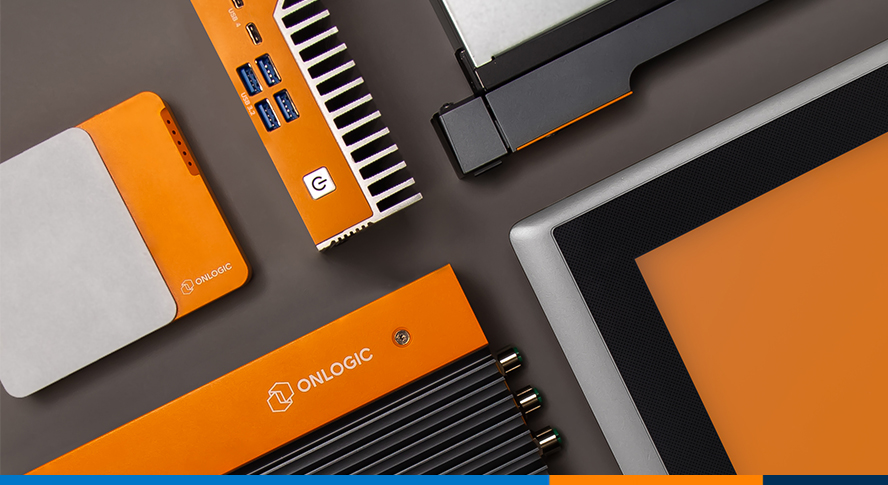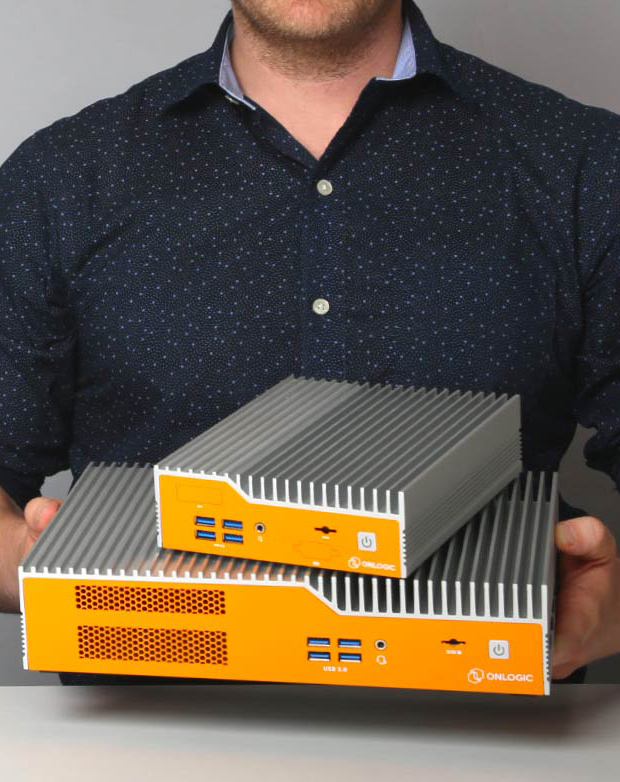What is an Embedded Computer?
A question we get asked a lot is, “what is an embedded computer?” An embedded PC functions as part of a larger device or system, rather than being used as a standalone computer. Typically, an embedded computer performs a specific function. Applications for embedded PCs range from industrial automation and in-vehicle computing to digital signage, robotics, and more.
When you think of a computer, you might picture a big, rectangular black box with cords that protrude from the back. These consumer PCs also have vents cut into the sides to allow airflow to cool the internal components.
However, as technology has advanced, the size and design of computer systems has changed dramatically. Today’s commercial embedded computers barely resemble their desktop tower counterparts. But perhaps even more importantly, the way industries utilize computers has evolved.
Computers in the Internet of Things (IoT) are used for things that seemed impossible not long ago. But what is an embedded PC, and how does it differ in form and performance from the consumer-grade tower computers?
What is an embedded computer?
Embedded computer systems go by many names (Box PC, Gateway, Controller, Industrial PC, etc.). An embedded PC is essentially any computer system that is designed for a specific use and implemented as part of a larger device, intelligent system, or installation. The term “embedded PC” doesn’t just refer to one type of computer, and instead encompasses many different types such as industrial and rugged PCs as well as edge servers.
Embedded computers come in an endless array of shapes and sizes from the tiny ARM-based devices that quietly collect and relay data, to all-in-one solutions that run huge earth movers and military equipment. Embedded computers also play a key role in the ever-evolving Internet of Things, enabling the connections between machines, people, places, things, and the cloud.
How are embedded computers used?
At OnLogic, our embedded computers serve as everything from computers for topside housing in underwater robotics solutions to the brains behind complex digital signage displays and modern interactive kiosks. Chances are good that in your travels today you passed right by a number of embedded computers without even knowing they were there.
What are the benefits of using an embedded computer?
20 ML300 systems next to a traditional computer tower.
An embedded PC is most easily defined by how it’s used. However, there are some key features of embedded computers that have made them a vital part of modern system design. Embedded computers offer a number of important advantages over standard consumer-grade hardware. These advantages include:
- Small Form Factor: Often built around small form factor motherboards like Mini-ITX or Intel’s NUC, embedded computers can be installed in places where traditional towers would never fit. Solid state storage and flexible mounting options also allow embedded PCs to be utilized in virtually any position or orientation.
- Low Maintenance: In many instances, embedded computers live deep inside complex systems, making reliability incredibly important. Industrial and embedded computers are engineered to provide 24/7, uninterrupted operation. They often employ carefully engineered enclosures designed to protect internal components from environmental damage. This can range from things like dust and airborne debris to extreme temperatures and vibration.
- Efficient Cooling: Consumer-grade computer systems use fans to help circulate air over components and keep them cool. In an embedded system, fans create a point of potential failure. In addition, fans require the chassis to be vented to enable air to enter and escape. While some embedded PCs still utilize fans, advancements in passive cooling allow many industrial PCs to be cooled without a fan and without vents. Removing the fan decreases failure rates, eliminates noise, and provides more space for integral components. Want to learn more? Check out our Tech Edge video: Fanless Cooling Explained.
How can you choose the best embedded PC?
The Axial Server from OnLogic features an embedded design and high-performance processing capabilities.
Embedded computers are employed by a huge range of industries all over the world. From pipeline monitoring in the oil & gas industry to network security devices designed to monitor and counter intrusion vulnerabilities, embedded computers are in use all around us.
Finding the best embedded computer requires a complete understanding of the unique application in which it will be used. With so many variables in play, there’s no one-size-fits-all embedded solution. To determine which embedded computer is right for your project, contact us today.
Note: This blog was originally published on October 26, 2014. It was updated for content on May 1st, 2023.
Get the Latest Tech Updates
Subscribe to our newsletters to get updates from OnLogic delivered straight to your inbox. News and insights from our team of experts are just a click away. Hit the button to head to our subscription page.
Share
More Articles
OnLogic Industrial Computers
Discover OnLogic's multitude of industrial computers that will help you to advance your IoT project
Learn more at OnLogic.com
OnLogic Industrial PCs: Designed to last. Built to order. Delivered in days. Visit our online store at OnLogic.com








